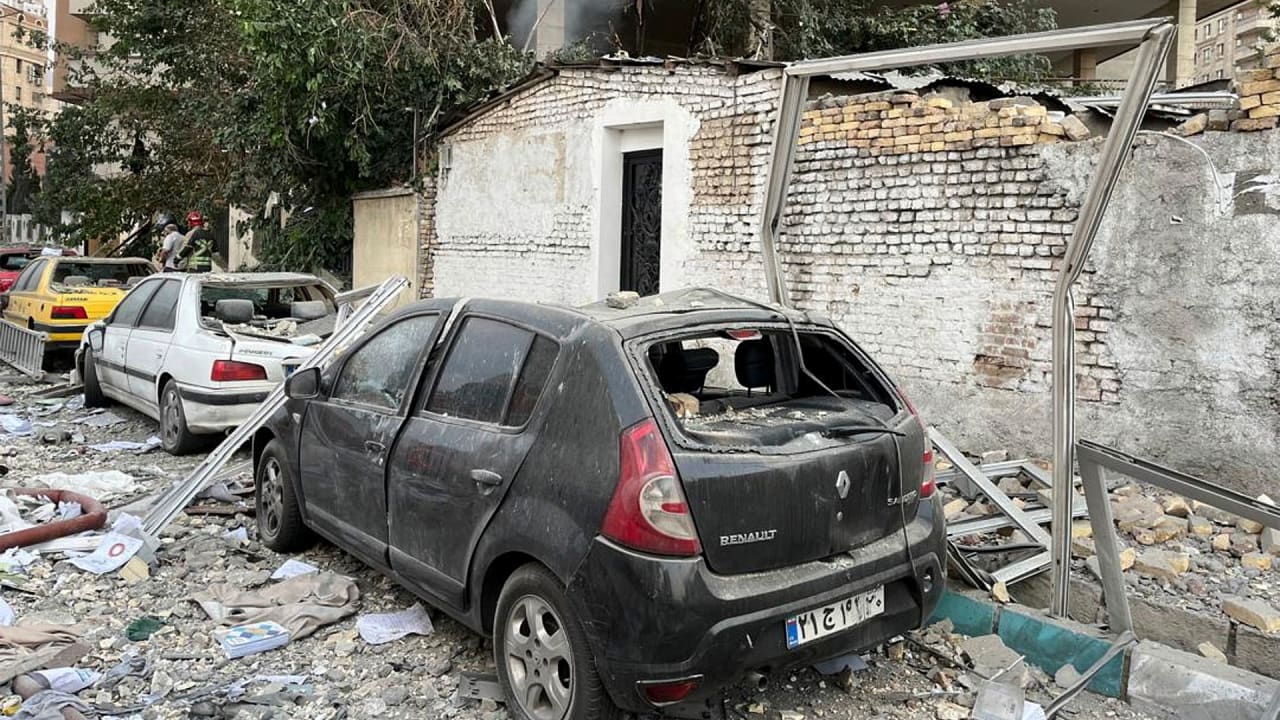The $50 million classic soccer jersey brand that started with an eBay flip
On a Tuesday afternoon in London, Doug Bierton, the unlikely cofounder and CEO of an even more unlikely $50 million classic soccer jersey company, arrives at 10 Downing Street, the U.K.’s equivalent of the White House. It’s St. George’s Day, a national day of celebration, and Prime Minister Keir Starmer is hosting a reception. Inside, it’s more Parliament sitting than party as some of the most important people in British politics, donning pressed suits and blouses, mingle. Then there’s Bierton, a regular bloke from Manchester, who’s wearing a screaming light-blue vintage England soccer jersey from the early 1990s. Who let that guy in? He’s here by invitation. Bierton cofounded Classic Football Shirts in 2006 alongside his brother, Gary, and college buddy Matt Dale. The prime minister’s team asked if they could bring some England shirts to the reception. “The prime minister’s really interested in football,” they said. “Maybe you could bring some Arsenal shirts, too?” “I’m talking to the prime minister about football shirts,” Bierton says. “This is the kind of crazy stuff that none of us could have ever imagined.” Going mainstream Classic soccer jerseys have exploded into mainstream fashion, with A-listers such as Dua Lipa, Hailey Bieber, Taylor Swift, and Rihanna all sporting vintage jerseys. Sabrina Carpenter even threw an England jersey over her Versace dress onstage at a major London music festival, the Capital Summertime Ball. High-end fashion houses like Balenciaga, Stella McCartney, and Armani have partnered with major football clubs, while the “blokecore” TikTok trend has transformed jerseys into streetwear that transcends sports fandom entirely. “We’ve seen a huge increase in 18- to 24-year-olds shopping for shirts,” Bierton says. “But I think Balenciaga making a kit isn’t as influential as Travis Scott wearing one onstage. With influencers and those types of creators wearing football shirts, it’s a lot more connected now than it used to be.” The connection is so strong that Classic Football Shirts is now a $50 million beast leading one of the hottest trends in global fashion, both in sports and beyond. And with the FIFA Club World Cup kicking off in the U.S. this weekend, and the FIFA World Cup coming stateside in 2026, the competition for American soccer fans is on, another charge that Bierton’s team is trying to lead. A £5 shirt and a near-death experience In the summer of 2006, Bierton and Dale were soccer-obsessed students at Manchester University. Bierton had been looking for a 1990 Germany World Cup kit to wear to a fancy dress party, but he’d come up empty. He eventually found the kit on eBay, as well as an England shirt from the same tournament at a local charity shop that he bought for £5. Strapped for cash, he later put it on eBay, flipping it for a £45 profit. The scarcity issue was obvious. If they were struggling to find vintage shirts, so were others. But the £45 profit proved a real opportunity in flipping classic soccer jerseys. Co-Founders Doug Bierton & Matthew Dale in first Manchester warehouse space [Photo: Classic Football Shirts] Bierton and Dale went all-in. They maxed out their student loans, overdrafts, and credit cards; filled their student house with football shirts; and launched Classic Football Shirts in August 2006. The early days were brutal. Just months after starting, it looked like they were doomed to fail. “October 2006 was a very cold time,” Bierton says. “We’d put all our cash into this thing, and we went 12 days without selling a shirt. We couldn’t afford to eat. We lost loads of weight. It was really tough.” But persistence paid off, and by Easter, they were selling £100 worth of classic soccer jerseys a day. Then £200. Then £400. “We were taking home £50 a day,” Bierton says. “We’re talking a minimum-wage salary, but there was just enough there to pay the bills and to live off. And that’s all we needed, right? As long as we could pay the bills and we still saw the potential with this business, we wanted to keep going.” The biggest problem: sourcing classic shirts With the demand established, their biggest problem became clear: How do they find more classic soccer jerseys? The biggest breakthrough came in 2010. They had moved the business from their student house to a Manchester office, where a man who had just moved there from Italy kept showing up, asking to work for them. They didn’t have a job for him, but they finally said: “Look, if you’re going to keep coming around, call all the Italian football clubs for us. Call all the brands and call all the independent retail stores, and ask if they’ve got any dead stock.” Two weeks later, the man came back. “I’ve been speaking to AC Milan,” he told them. “They’ve got a full warehouse of inventory. You wanna go have a look at it?” Bierton and Dale flew to Italy, and when AC Milan opened those warehouse doors, “it was like Raiders of the Lost Ark,” B
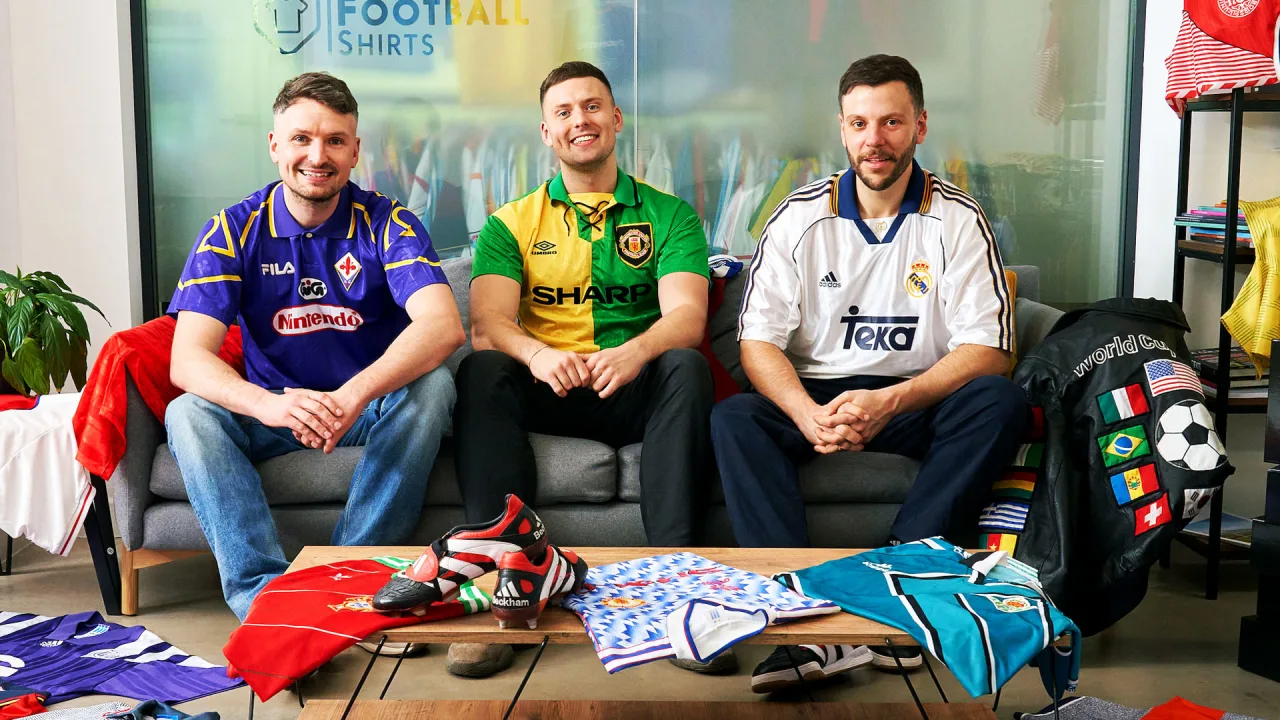
On a Tuesday afternoon in London, Doug Bierton, the unlikely cofounder and CEO of an even more unlikely $50 million classic soccer jersey company, arrives at 10 Downing Street, the U.K.’s equivalent of the White House.
It’s St. George’s Day, a national day of celebration, and Prime Minister Keir Starmer is hosting a reception. Inside, it’s more Parliament sitting than party as some of the most important people in British politics, donning pressed suits and blouses, mingle.
Then there’s Bierton, a regular bloke from Manchester, who’s wearing a screaming light-blue vintage England soccer jersey from the early 1990s.
Who let that guy in? He’s here by invitation. Bierton cofounded Classic Football Shirts in 2006 alongside his brother, Gary, and college buddy Matt Dale. The prime minister’s team asked if they could bring some England shirts to the reception. “The prime minister’s really interested in football,” they said. “Maybe you could bring some Arsenal shirts, too?”
“I’m talking to the prime minister about football shirts,” Bierton says. “This is the kind of crazy stuff that none of us could have ever imagined.”
Going mainstream
Classic soccer jerseys have exploded into mainstream fashion, with A-listers such as Dua Lipa, Hailey Bieber, Taylor Swift, and Rihanna all sporting vintage jerseys. Sabrina Carpenter even threw an England jersey over her Versace dress onstage at a major London music festival, the Capital Summertime Ball. High-end fashion houses like Balenciaga, Stella McCartney, and Armani have partnered with major football clubs, while the “blokecore” TikTok trend has transformed jerseys into streetwear that transcends sports fandom entirely.
“We’ve seen a huge increase in 18- to 24-year-olds shopping for shirts,” Bierton says. “But I think Balenciaga making a kit isn’t as influential as Travis Scott wearing one onstage. With influencers and those types of creators wearing football shirts, it’s a lot more connected now than it used to be.”
The connection is so strong that Classic Football Shirts is now a $50 million beast leading one of the hottest trends in global fashion, both in sports and beyond. And with the FIFA Club World Cup kicking off in the U.S. this weekend, and the FIFA World Cup coming stateside in 2026, the competition for American soccer fans is on, another charge that Bierton’s team is trying to lead.
A £5 shirt and a near-death experience
In the summer of 2006, Bierton and Dale were soccer-obsessed students at Manchester University. Bierton had been looking for a 1990 Germany World Cup kit to wear to a fancy dress party, but he’d come up empty. He eventually found the kit on eBay, as well as an England shirt from the same tournament at a local charity shop that he bought for £5. Strapped for cash, he later put it on eBay, flipping it for a £45 profit.
The scarcity issue was obvious. If they were struggling to find vintage shirts, so were others. But the £45 profit proved a real opportunity in flipping classic soccer jerseys.

Bierton and Dale went all-in. They maxed out their student loans, overdrafts, and credit cards; filled their student house with football shirts; and launched Classic Football Shirts in August 2006. The early days were brutal. Just months after starting, it looked like they were doomed to fail.
“October 2006 was a very cold time,” Bierton says. “We’d put all our cash into this thing, and we went 12 days without selling a shirt. We couldn’t afford to eat. We lost loads of weight. It was really tough.”
But persistence paid off, and by Easter, they were selling £100 worth of classic soccer jerseys a day. Then £200. Then £400.
“We were taking home £50 a day,” Bierton says. “We’re talking a minimum-wage salary, but there was just enough there to pay the bills and to live off. And that’s all we needed, right? As long as we could pay the bills and we still saw the potential with this business, we wanted to keep going.”
The biggest problem: sourcing classic shirts
With the demand established, their biggest problem became clear: How do they find more classic soccer jerseys?
The biggest breakthrough came in 2010. They had moved the business from their student house to a Manchester office, where a man who had just moved there from Italy kept showing up, asking to work for them. They didn’t have a job for him, but they finally said: “Look, if you’re going to keep coming around, call all the Italian football clubs for us. Call all the brands and call all the independent retail stores, and ask if they’ve got any dead stock.”
Two weeks later, the man came back.
“I’ve been speaking to AC Milan,” he told them. “They’ve got a full warehouse of inventory. You wanna go have a look at it?”
Bierton and Dale flew to Italy, and when AC Milan opened those warehouse doors, “it was like Raiders of the Lost Ark,” Bierton says.
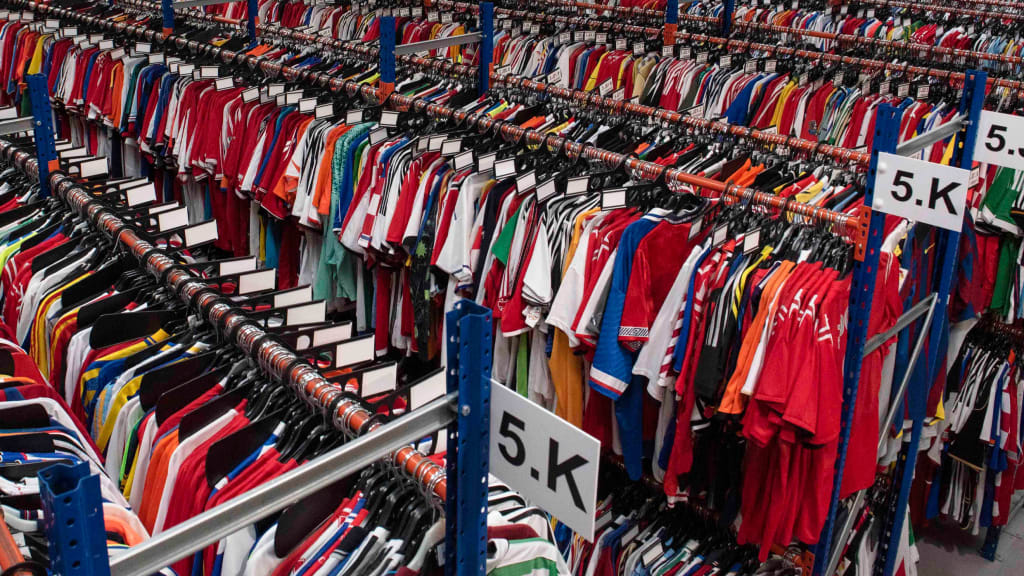
“They literally kept everything, even down to the underpants,” Dale told The Athletic. “They all had the numbers in. So you could tell there was, like, R9 [the Brazilian Ronaldo] who was wearing 99 when he played for Milan. And David Beckham’s underpants! It was just crazy what they had.”
Bierton and Dale bought the whole warehouse—20 years’ worth of inventory. “We didn’t have the storage space for it, and we didn’t have the cash for it,” Bierton says. “But we said, ‘Let’s take a loan out, go find a warehouse, and make it work.’”
Take big risks, then figure it out
The AC Milan deal established a blueprint that Classic Football Shirts has followed ever since: Take big risks, then figure it out.
This pattern repeated when Nike was closing out all its player-issue inventory. “We needed to spend £1 million to get that inventory,” Bierton recalls. “Did we have £1 million to spend? No. But we went and did it anyway.”
They even sponsored Burnley FC’s shirt in 2022 despite not having a marketing budget for it. Terms were not disclosed, but Burnley shirt sponsors in 2019 and 2023 paid upward of £7 million.
They’ve also made big bets beyond inventory deals. A decade ago, Bierton would never have imagined opening physical retail stores. They’re expensive and difficult to service. But he realized that creating experiential spaces “where people can touch and feel the old shirts from the past” could unlock potential that online sales alone couldn’t match, and they opened their first physical retail store in London in 2018.
A grassroots approach
But the real secret sauce isn’t just big bets; it’s the grassroots approach of pounding the pavement and doing things most people don’t want to do. “You’ve got to pick up the phone,” Bierton says. “You’ve got to knock doors. You’ve got to send random emails out to everybody who is trading football shirts. The ultimate thrill of the whole thing has always been that you never know what you’re going to get tomorrow.”
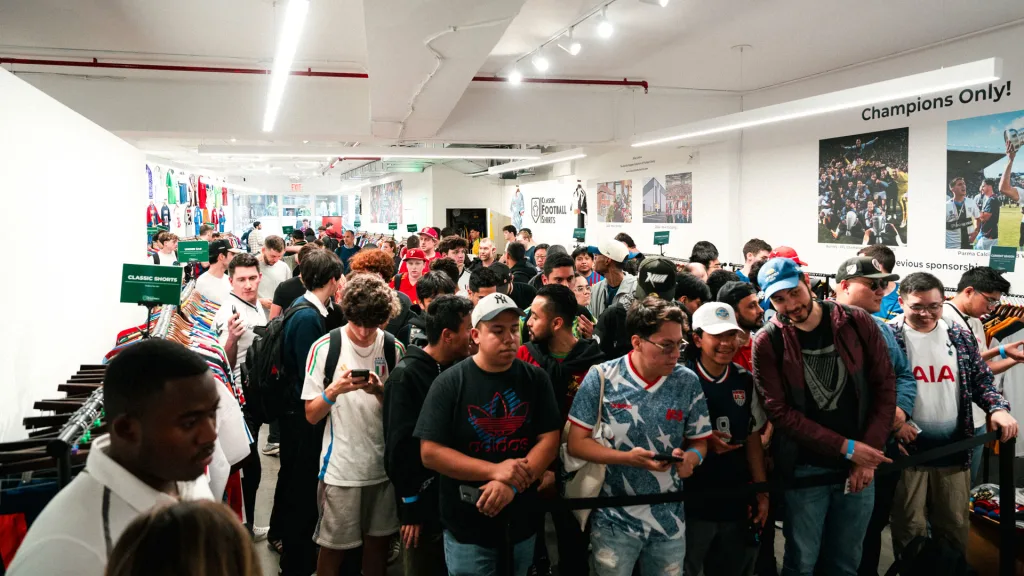
To date, Classic Football Shirts has worked with more than 500 former professional players to buy their personal collections. The sourcing operation has become so sophisticated that brands like Nike, Adidas, and Puma now come to them when they have excess inventory. “We’re working closely with those brands to help design future kits and inspire what they should bring back,” Bierton says.
The company now houses over 30,000 individual items and over 500,000 units in stock, with 7,000 unique or match-worn shirts stored in a climate-controlled “vault,” the largest collection of its kind. The company represents over 1,000 clubs, stocks shirts from over 50 international teams and more than 200 club teams, and lists 30,000 vintage shirts monthly and thousands daily.
As of May 2024, they were selling upward of 750,000 shirts annually and have sold more than 6 million classic soccer jerseys, shipping to over 130 countries, with their primary focus, like most in their space, shifting to the U.S. ahead of the World Cup.
The power of an authentic brand
Classic Football Shirts has been profitable since its initial October slump. The founders have poured profits back into the business, and it’s grown 30% year over year since 2019. They now have more than 200 employees.
In 2024, for the first time, the company took outside investment, in the form of $38.5 million, from The Chernin Group, valuing the company somewhere north of $50 million.
“I think there are a lot of businesses that can be manufactured to be authentic,” says Greg Bettinelli, TCG’s partner who led the investment. “This was legitimately two blokes selling Manchester United shirts to offset probably their beer or food budget when they were in university. They’ve cultivated a community and audience without spending any real money on customer acquisition. They tell stories and have created a culture around the business. Having authentic brands and being able to be a trusted source for people to buy shirts from is super important. And so it just all ties together.”
Expanding into the U.S.

The company has since brought on additional strategic investors, including two-time World Cup and Olympic gold medal winner Alex Morgan, former U.S. men’s national team player Stu Holden, and Rob McElhenney, the actor and producer who famously co-owns Wrexham AFC alongside Ryan Reynolds. McElhenney is a customer turned investor, as he acquired his haul of vintage Wrexham shirts during his club’s takeover talks.
Global sales of new soccer shirts reach beyond $6 billion annually, and Bettinelli sees massive potential in a market he estimates is growing at over 100% year over year. The U.S. already represents 15% of Classic Football Shirts’ sales—their fastest-growing market—with over 100% year-over-year growth in North America.
Recent capital infusions have already helped accelerate the company’s footprint in the U.S. as they plan to take advantage of next year’s World Cup. They’ve already opened three retail stores in 12 months—in New York, Los Angeles, and Miami—with plans for a presence in all 11 World Cup host cities. After just three months, the NYC store alone was competing with the London flagship store in sales.
“The World Cup becomes a really seminal moment, and a lot of people are behind on event planning,” Holden says. “That’s one area where I think Classic Football Shirts has been so smart and strategic—opening shops in key cities and having a real plan for being a part of what will be the biggest sporting event the planet has ever seen.”
The biggest sporting event in history
Ahead of the Euros final last July, Google searches for “England jerseys” spiked by 623%, while London-based e-commerce company Depop saw a 294% increase in football shirt searches leading into the tournament. The 2026 World Cup’s impact will dwarf those numbers.
The tournament will be the largest sporting event in history—48 teams, 104 matches across 16 cities in three countries, 5.5 million attendees, billions of viewers globally, and over $5 billion in projected revenue.
Classic Football Shirts has already proven they’re ready to capitalize on the event. Their U.S. business “virtually doubled” during summer 2024 alone from Euro 2024 and Copa América. With American football fandom up 60% in the past decade, the number of fans ripe for acquisition is higher than ever.
But this isn’t just about tournament sales—it’s about permanently establishing football shirts in American fashion culture.
“This is going to be the biggest sporting event in the history of sport,” Bettinelli says. “And with 48 teams, it’s showcasing globally. So I think being the leading brand that’s selling football shirts is probably a good place to be.”





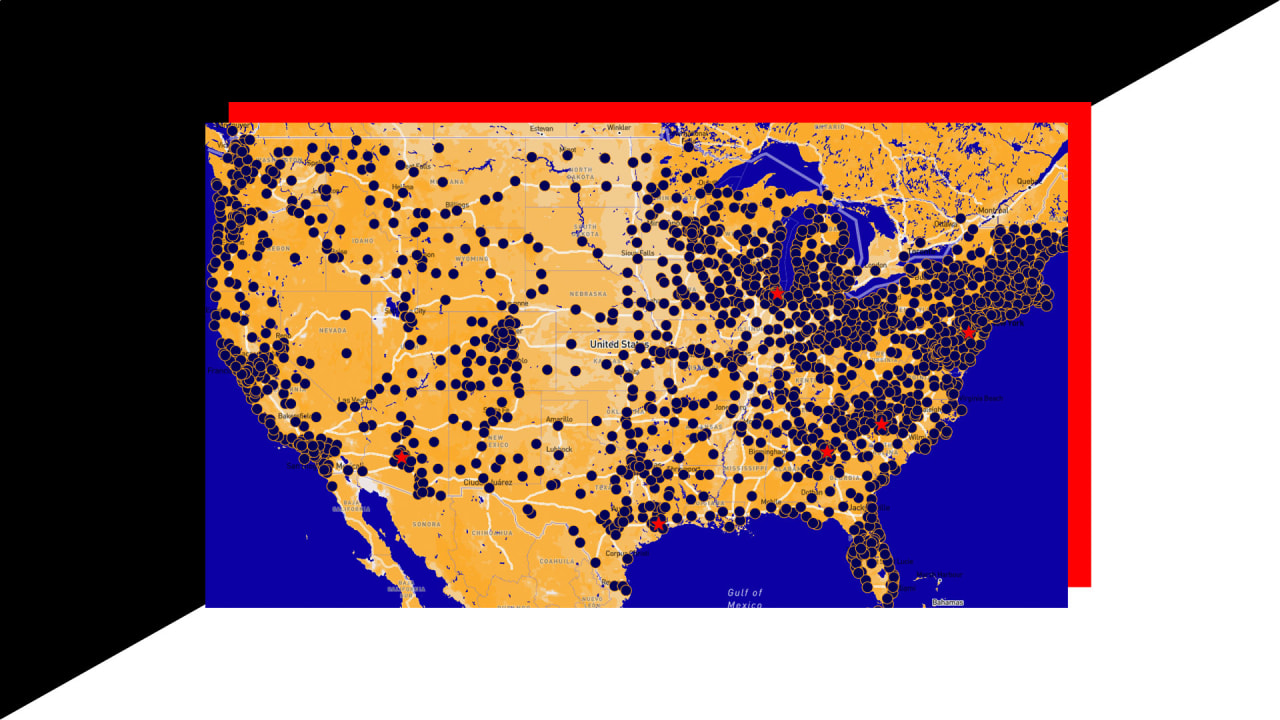































































![https //g.co/recover for help [1-866-719-1006]](https://newsquo.com/uploads/images/202506/image_430x256_684949454da3e.jpg)

























![[PATREON EXCLUSIVE] The Power of No: How to Say It, Mean It, and Lead with It](https://tpgblog.com/wp-content/uploads/2025/06/just-say-no.jpg?#)
















































